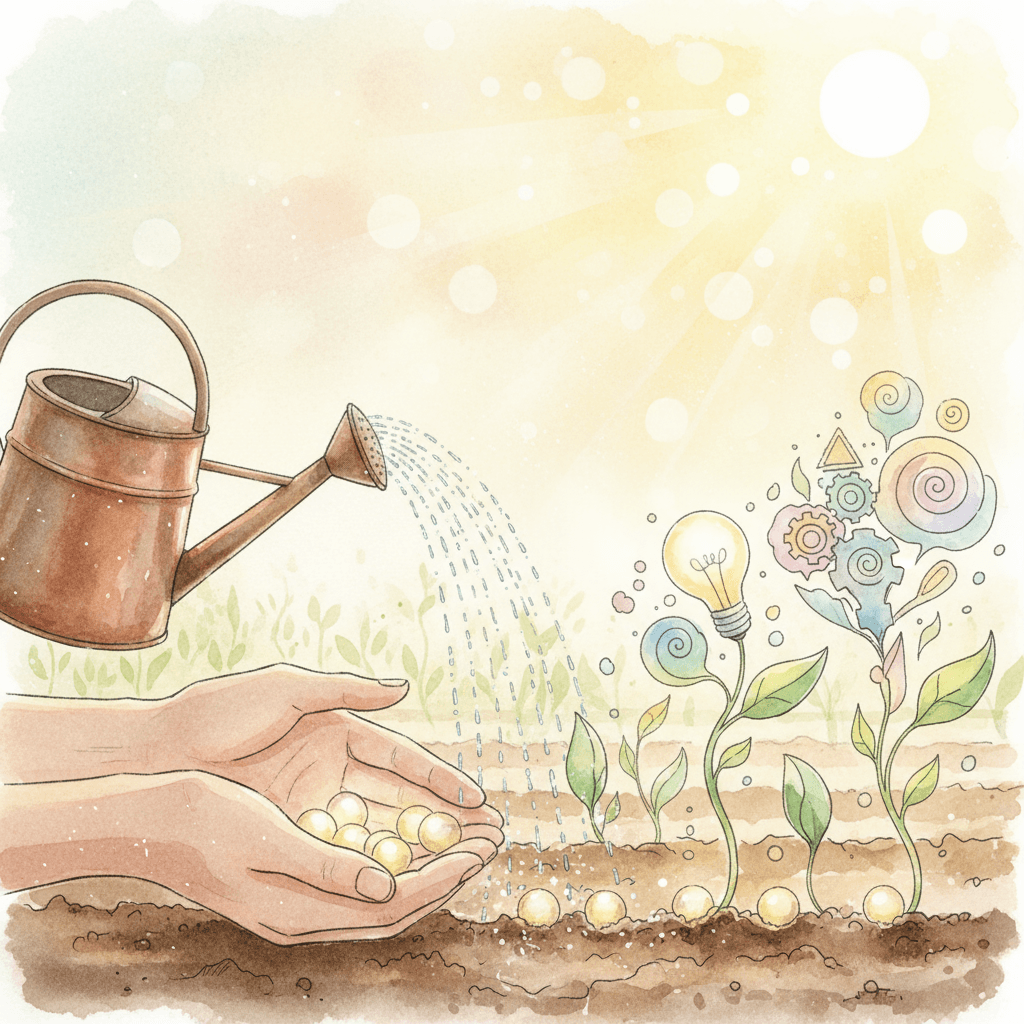Cultivating Ideas Through Patient Daily Effort

Plant ideas like seeds and water them with daily effort. — Rabindranath Tagore
Planting the Seed of Intention
Tagore’s image invites us to begin where all growth starts: with a deliberate sowing. A seed needs a place, depth, and quiet; similarly, an idea asks for a clear intention, an initial scope, and protected time free from noise. By choosing where to plant—whether a notebook, a prototype, or a conversation—we define the soil that will nourish it. Tagore’s own practice, visible in the meditative cadences of Gitanjali (1912, Eng. ed.), shows how a humble beginning can carry vast potential. Thus, the first move is not grand execution but careful placement, trusting that the unseen work beneath the surface prepares the way for what will later sprout.
Daily Watering as Habit and Craft
From this starting point, growth depends on small, consistent acts—the daily watering of effort. Habit research suggests that steady, modest inputs compound over time; James Clear’s Atomic Habits (2018) popularizes the idea that 1 percent improvements accumulate into striking gains. Tagore embodied this cadence: across decades he composed more than two thousand songs in the Rabindra Sangeet tradition, proof that regular practice can yield a forest of work. Crucially, daily effort is not rote repetition; it is attentive iteration that refines both the idea and the person tending it. In this light, discipline becomes devotion, turning routine into a quiet engine of originality.
Germination, Dormancy, and the Incubation Effect
Even with steady care, seeds germinate on their own timetable, and ideas do the same. Creativity research documents an incubation effect, where stepping away improves problem solving; a meta-analysis by Sio and Ormerod (Psychological Bulletin, 2009) shows that breaks and sleep often unlock insights that effort alone cannot. Tagore’s educational experiments at Santiniketan (founded 1901) placed reflection in nature at the heart of learning, recognizing that contemplation complements labor. Therefore, wise makers alternate focused work with restorative pauses, allowing the subconscious to rearrange fragments into form. Patience is not passivity; it is cooperation with the rhythms that make growth possible.
Weeding, Pruning, and Guided Light
As shoots appear, gardeners remove weeds and prune excess so the plant can channel strength. In creative work, this translates to editing, simplifying, and seeking constructive critique. Ed Catmull’s account of the Pixar Braintrust in Creativity, Inc. (2014) illustrates how candid feedback, offered without authority’s sting, gives a project the light it needs without scorching it. Likewise, constraints serve as trellises: limits on time, words, or tools guide energy upward rather than letting it sprawl. Through careful subtraction and shaped exposure, we keep the idea healthy, strengthening its core rather than ornamenting its edges.
Soil, Seasons, and Shared Ecosystems
Beyond the individual, the environment determines richness. Tagore’s Visva-Bharati (established 1921) aspired to be a meeting place of cultures—its motto, drawn from the Upanishads, reads roughly as where the world makes a home in a single nest. Ideas thrive in such diverse soils: mentors add nutrients, peers provide wind that toughens stems, and communities create seasonal cycles of sowing, tending, and harvest. Accountability groups, studios, and workshops reproduce these conditions, ensuring that no seed grows in isolation. Thus, the gardener’s wisdom includes curating a habitat where cross-pollination is natural and renewal is expected.
Harvest, Seed-Saving, and Compounding Returns
Eventually, a healthy idea bears fruit—and inside each fruit are more seeds. Shipping work, gathering feedback, and documenting process all create seed stock for future seasons. Open-source projects demonstrate this dynamic: the Linux kernel, first released in 1991, multiplied through shared contributions, turning initial code into infrastructure for countless systems. Likewise, publishing a paper, releasing a prototype, or teaching what you learned propagates new cycles of growth. In the end, Tagore’s counsel forms a loop: plant with intention, water with daily effort, rest for insight, prune with care, grow in community, and then harvest to sow again—so that one idea becomes a garden.